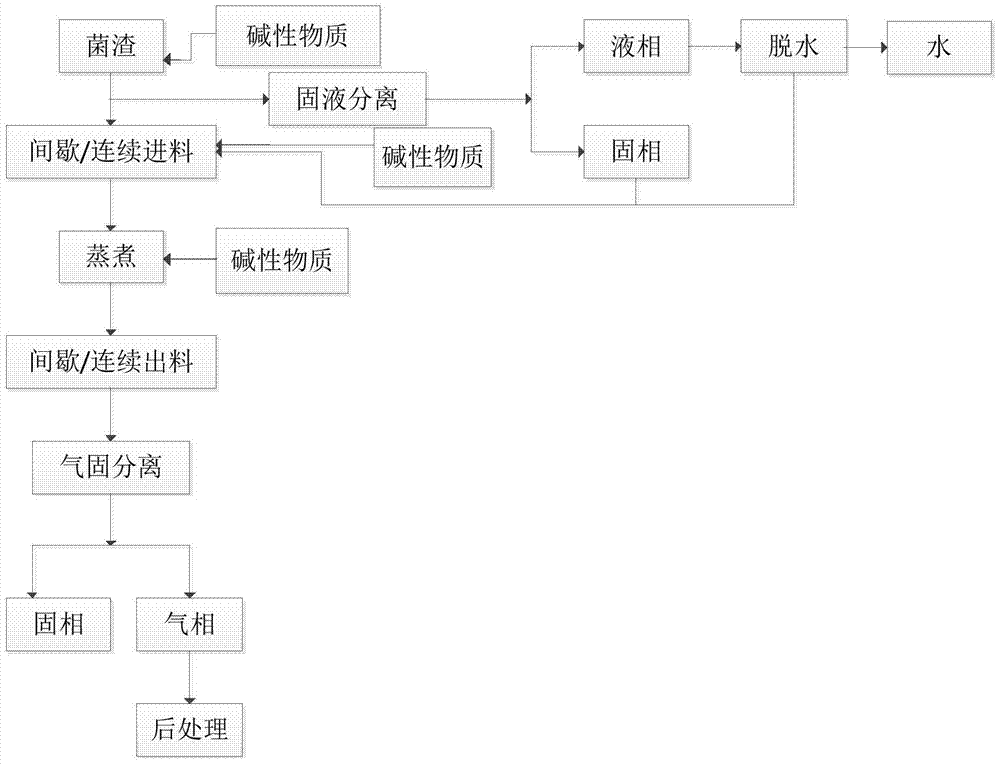Antibiotic residue treatment process
A technology of antibiotic slag and treatment process, which can be used in the removal of solid waste, chemical instruments and methods, transportation and packaging, etc., and can solve the problems of environmental pollution, difficult to effectively degrade, and release unpleasant odors.
- Summary
- Abstract
- Description
- Claims
- Application Information
AI Technical Summary
Problems solved by technology
Method used
Image
Examples
Embodiment 1
[0047] This example illustrates the treatment process and results of the antibiotic bacterial residue provided by the present invention.
[0048] The penicillin slag was mixed with ammonia water to adjust the pH value of the penicillin slag to 8.0, and the antibiotic slag was placed in a batch vertical digester, and saturated steam was introduced, so that the saturated steam pressure in the batch digester was 0.2 MPa, degraded for 15 minutes under airtight conditions at 120 °C with stirring. The batch digester is rapidly depressurized by steam explosion (the pressure difference before and after decompression is 0.1MPa), and the exhaust gas is separated by a cyclone separation device and sent to the gas treatment equipment for post-treatment, and the solid-phase degradation products are separated. , it was determined that the residual penicillin in the degradation product was 1.98ppm, and the crude protein content was 46.3% by weight.
Embodiment 2
[0050] This example illustrates the treatment process and results of the antibiotic bacterial residue provided by the present invention.
[0051] The penicillin bacterial residue was treated according to the method of Example 1, except that the degradation temperature was 180°C. The batch digester was rapidly depressurized by steam explosion (the pressure difference before and after depressurization was 0.9MPa). It was determined that the residual penicillin in the degradation product was <0.01 ppm, and the crude protein content was 53.3% by weight.
Embodiment 3
[0053] This example illustrates the treatment process and results of the antibiotic bacterial residue provided by the present invention.
[0054] The penicillin bacterial residue was treated according to the method of Example 1, except that the degradation temperature was 160°C. The batch digester was rapidly depressurized by steam explosion (the pressure difference before and after depressurization was 0.51MPa). It was determined that the residual penicillin in the degradation product was <0.01 ppm, and the crude protein content was 50.9% by weight.
PUM
 Login to View More
Login to View More Abstract
Description
Claims
Application Information
 Login to View More
Login to View More - R&D
- Intellectual Property
- Life Sciences
- Materials
- Tech Scout
- Unparalleled Data Quality
- Higher Quality Content
- 60% Fewer Hallucinations
Browse by: Latest US Patents, China's latest patents, Technical Efficacy Thesaurus, Application Domain, Technology Topic, Popular Technical Reports.
© 2025 PatSnap. All rights reserved.Legal|Privacy policy|Modern Slavery Act Transparency Statement|Sitemap|About US| Contact US: help@patsnap.com

